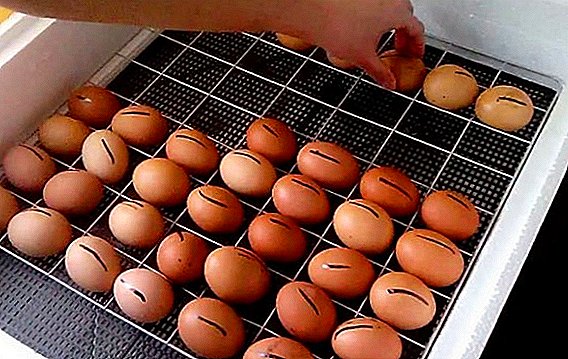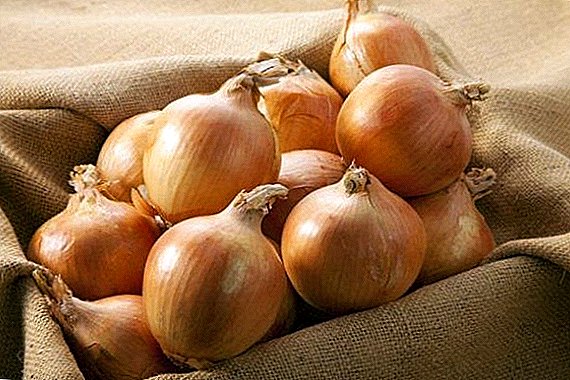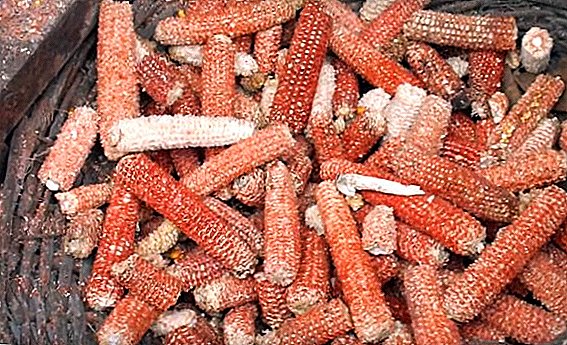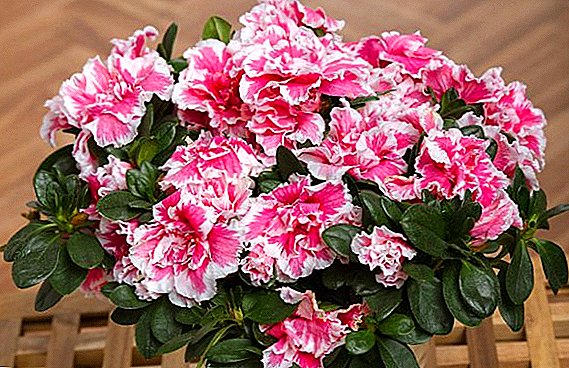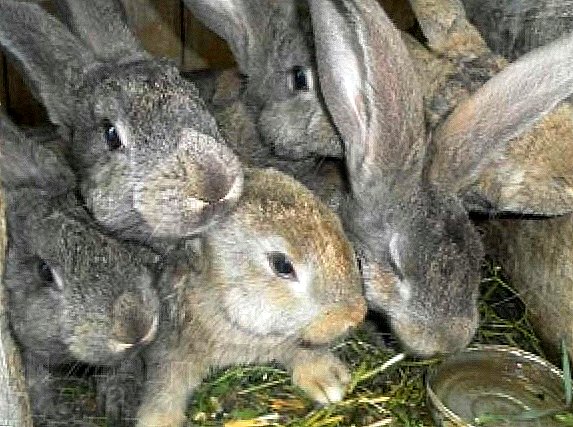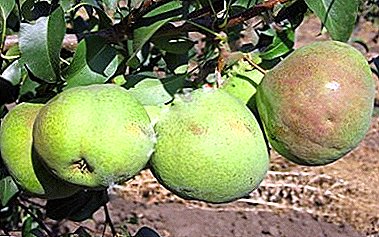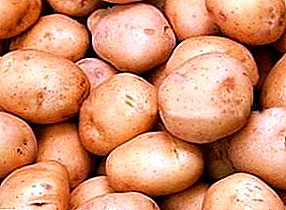
In adverse climatic conditions of Russia, unpretentious and high-yielding varieties of agricultural plants are of great importance.
It is very good if they are resistant to pests and have good taste properties. Finnish potato Timo Hankkijan is deservedly popular with gardeners.
In this article you will find not only a complete description of the variety, but also get acquainted with its characteristics and cultivation features.
Variety description
| Grade name | Timo Hankkyan |
| general characteristics | early table variety of Finnish selection with good taste |
| Gestation period | 50-65 days |
| Starch content | 13-14% |
| Mass of commercial tubers | 100-110 gr |
| The number of tubers in the bush | 5-9 |
| Yield | up to 380 kg / ha |
| Consumer quality | good taste, does not darken |
| Recumbency | 96% |
| Skin color | yellow |
| Pulp color | light yellow |
| Preferred growing regions | North, North-West, Central |
| Disease resistance | low resistance to late blight, golden potato cyst nematode and scab |
| Features of growing | responds well to fertilizer, is afraid of sudden changes in temperature |
| Originator | BOREAL PLANT BREEDING (Finland) |
This potato variety has oval tubers with a yellow or light brown thin skin. Eyes almost imperceptible, medium depth. The color of the pulp is yellow or light yellow. The starch content is about 14%, the pulp is razvaristaya, with high taste properties.
The amount of starch in potato tubers of other varieties:
| Grade name | Starch |
| Lady claire | 12-16% |
| Innovator | up to 15% |
| Labella | 13-15% |
| Bellarosa | 12-16% |
| Riviera | 12-16% |
| Karatop | 11-15% |
| Veneta | 13-15% |
| Gala | 14-16% |
| Zhukovsky early | 10-12% |
| Lorch | 15-20% |
Due to the fact that Timo's potatoes start digging up early, the mass of tubers varies from 60 to 120 g
Specifications
This variety is favorably distinguished by the fact that it is cultivated in almost all regions of Russia, introduced into the State Register. Since the climatic conditions in different regions vary greatly, yield of this variety also differs.
For example, in the Northern region, the yield of 150-200 centners per hectare, in the Northwest - 230-380 centners per hectare, in the Far East, it can reach 300 centners per hectare.
And in the table below you can see what are the yields and the percentage of marketability of tubers in other potato varieties:
| Grade name | Yield (kg / ha) | Tuber marketability (%) |
| Lemongrass | 195-320 | 96 |
| Melody | 180-640 | 95 |
| Margarita | 300-400 | 96 |
| Alladin | 450-500 | 94 |
| Courage | 160-430 | 91 |
| Beauty | 400-450 | 94 |
| Grenada | 600 | 97 |
| The hostess | 180-380 | 95 |
Taste qualities highly appreciated by consumers. The variety refers to early ripening; in the southern regions, new potatoes can be chosen 40 days after planting; in general, the crop is harvested after 70-80 days.
 Potatoes table, is intended both for cooking, and for frying, maintains long storage. Marketability is 70-90%. This variety is resistant to both drought and excessive moisture content.
Potatoes table, is intended both for cooking, and for frying, maintains long storage. Marketability is 70-90%. This variety is resistant to both drought and excessive moisture content.
Read more about the terms, temperature and problems during storage of potatoes in the additional articles of our website. And also about how to store roots in the winter, in boxes, on the balcony, peeled, in the refrigerator.
There are no special requirements for the soil, in this case the general rule for potatoes is true - in sandy soils the yield and taste qualities of tubers are higher than in clayey ones.
This variety is highly resistant to diseases and pests.. High resistance to scab, rhizoctoniosis, potato cancer, black leg, moderate resistance to late blight, but the specificity of the variety is that the crop is removed, as a rule, before the late blight appears in the soil.
It is very resistant to the virus of leaf curl and potato virus strain M, therefore it is possible not to renew seed material for a long time, the potato practically does not degenerate. Potatoes are susceptible to the golden nematode.
The variety is characterized by satisfactory storage stability.
Bush medium height sprawling. Corolla is small, light purple or bluish-purple, the number of flowers is different, from small to large. The leaves are large or very large, the silhouette is closed or in between, the color is green or light green.
A photo


Features of growing
Agricultural technology for this variety is standard. Seed material is germinated tubers, potatoes are grown in open ground, depending on the region they are applied to the soil in April-May.
Sowing scheme - 60 * 35 cm, the embedment depth is shallow, not more than 5 cm, a tuber well can be simply sprinkled with earth for the speedy appearance of powerful and amicable shoots. Such a small embedding requires later obligatory hilling of bushes.
Attention: this variety is recommended to be grown after flax, annual or perennial grasses or winter crops.
Feed the potatoes to increase the yield and accelerate the growing season. The first time you can spray the nutrient solution just appeared shoots.
 During the development of the tops, you can feed the plants with a solution of 0.5 liters of manure per bucket of water, bringing this liquid under each bush.
During the development of the tops, you can feed the plants with a solution of 0.5 liters of manure per bucket of water, bringing this liquid under each bush.
Gardeners traditionally use nettle which has rotted out in water to feed potatoes. 10 kg of finely chopped nettle can be kept in a 100 liter barrel of water a week, after which you add a bucket of manure, mix and pour about 1 liter of the resulting fertilizer under each bush.
The second time they feed when the bud develops, take 1 cup of ash in a bucket of water, pour half a liter of solution each bush.. During flowering, fertilizing is done for the third time, spreading 1 cup of manure per 10 liters of water, and a half-liter of liquid is also added to each bush.
More information about how, how and when to fertilize potatoes, how to do it when planting, read the detailed materials of the site.
After planting, it is not recommended to water the potatoes, as in this case the roots will germinate to a sufficient depth.
The need for watering is moderate, by eye you can focus on the beginning of the withering of the lower leaves of the bush. Watering early in the morning or in the evening with water from a barrel heated to a temperature of 15-20 degrees. During the flowering period, you need to water more abundantly.
Be sure to periodically loosen the soil to a depth of 2-3 cm in order to improve root respiration and at the same time weed out small weeds. It is necessary to begin to loosen a week after planting, with the operation, care must be taken not to damage the stems and not dig up the nodules ahead of time. Mulching can also be used to control weeds.
Hilling is also necessary, as for any potato variety, it is necessary to accelerate the growing season, as well as to prevent late blight. For the first time, spud stems 15 cm high, and a second time, 12 days after the first.
Of course, it is necessary to identify and destroy plant pests as they occur.
 Fighting the Colorado potato beetle and its larvae very often becomes a real problem for gardeners.
Fighting the Colorado potato beetle and its larvae very often becomes a real problem for gardeners.We bring to your attention a series of materials about folk remedies and chemical preparations that can cope with the problem.
 In this way, Timo Hankkyan - one of the most popular varieties of early ripe potatoes, zoned everywhere in the country.
In this way, Timo Hankkyan - one of the most popular varieties of early ripe potatoes, zoned everywhere in the country.
Potatoes have a fairly high yield, excellent taste, it can be dug in 50 days after planting.
The positive side is also high resistance to a number of bacterial and fungal diseases, but the variety is not protected from the golden nematode. Read also about such common diseases as Alternaria, Fusarium, Verticillis. Grown mainly in sandy soils, starting from the end of April, during the development of the bush, the plants are fed with a solution of manure or rotted nettle and spud 3 times.
We also suggest you to get acquainted with other varieties that have a variety of ripening terms:
| Superstore | Early maturing | Medium early |
| Farmer | Bellarosa | Innovator |
| Minerva | Timo | Pretty boy |
| Kiranda | Spring | American |
| Karatop | Arosa | Crown |
| Juvel | Impala | Manifesto |
| Meteor | Zorachka | Elizabeth |
| Zhukovsky early | Colette | Vega | Riviera | Kamensky | Tiras |
Growing potatoes for both personal consumption and business scale can be done in many different ways. We want to introduce you to Dutch technology, to growing under straw, from seeds, in barrels or bags, in boxes or boxes without bottom.


